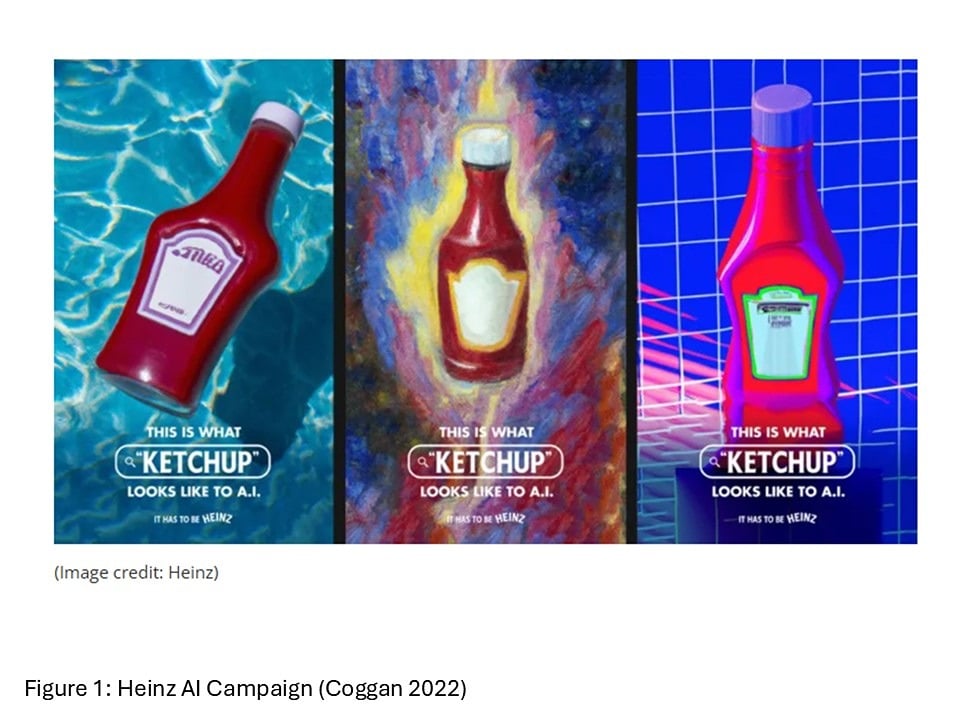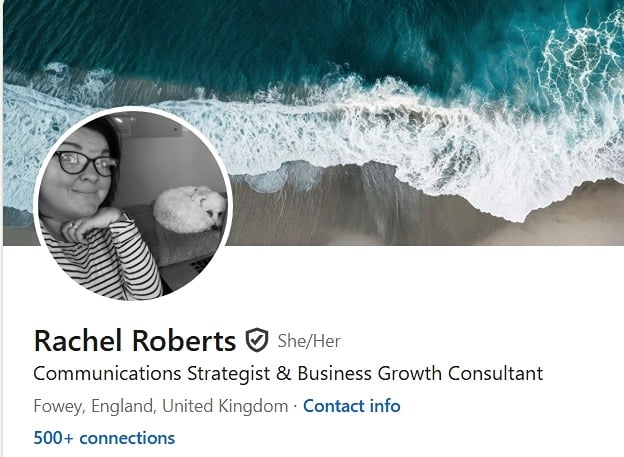In An AI Driven World, What Are The Challenges For Media Planners?

Photo by cottonbro studio
Hello! This post is the fourth instalment of a six-part series I’m creating as part of the Global Media Planning module for my Masters in Marketing and Digital Communications. Each instalment will tackle a different question from the assignment brief, and I’ll be sharing my progress along the way. The final assignment submission will bring everything together by focusing on three of the most important questions. Whether you’re interested in global media planning or just curious about the behind-the-scenes of a master’s assignment, I hope you find these insights useful. Thanks for following along!
Human Creativity Remains Essential In AI-Driven Media Planning
Artificial intelligence (AI) is revolutionising media planning through automation and optimisation, but it also introduces significant challenges. Media planners must now ensure brand safety and quality in automated environments, maintain transparency and ethical oversight, and address potential bias in AI-driven decisions. Balancing AI’s efficiency with human creativity and strategic insight is crucial for innovative, effective campaigns. This post, part of my series on Global Media Planning, explores these challenges and the ongoing importance of human ingenuity in an AI-driven world.
The Limitations Of Algorithmic Creativity
AI systems demonstrate what researchers term “bounded creativity”, recombining patterns from their training data rather than generating truly original ideas, which enables efficient media campaign optimisation but limits breakthrough innovation (Ismayilzada et al. 2024; Tian et al. 2024). Their reliance on historical data biases outputs towards replicating past successes instead of pioneering new approaches. While current AI-driven tools excel at pattern recognition and campaign optimisation, they often lack the diversity, emotional complexity, and multimodal integration, such as visuals, audio, and interactivity found in human-driven narratives (Ismayilzada et al. 2024).
A note of caution: Practitioners should interpret research findings with care, as many studies are based on controlled experiments or preprint research that may not capture the dynamic, cross-disciplinary realities of the industry. The rapid pace of AI advancement means that today’s observed limitations and predominantly text-focused metrics may soon be outdated. As a result, the creative constraints identified now may prove to be temporary rather than lasting barriers.
The Distinct Value of Human Creative Intelligence
Human creativity operates through fundamentally different cognitive mechanisms to AI. We excel at abductive reasoning, forming innovative hypotheses from incomplete information, and analogical thinking that connects disparate concepts unexpectedly (Ismayilzada et al. 2024).
The Heinz "AI Ketchup" campaign (sample shown in Figure 1) provides an excellent illustration of this dynamic (Young Urban Project 2025; Coggan 2022). While AI generated numerous ketchup images, the majority resembling Heinz bottles, it was the human strategic team who recognised the deeper cultural insight: that Heinz is ketchup. The AI provided raw creative output, but humans supplied the interpretive framework and storytelling that transformed it into a culturally resonant campaign.

Human creativity also draws from lived experience, cultural understanding, and emotional intelligence (M1-Project 2025). These qualities enable media planners to anticipate audience responses, navigate cultural sensitivities, and craft narratives that resonate beyond algorithmic optimisation whilst addressing attention economy demands (Hogan 2001).
Building Effective Human-AI Collaboration
Successful media planning requires strategic integration of human and artificial intelligence capabilities through thoughtful divisions of cognitive labour. Alex Schultz, Meta's chief marketing officer and vice president of Analytics, was recently cited in an article on eWEEK (Abdullahi 2025):
"We believe AI will enable agencies and advertisers to focus precious time and resources on the creativity that matters."
AI should handle data-intensive tasks: pattern detection, performance optimisation, content variation testing, and scaling campaigns across platforms. Human strategists should focus on interpretation, conceptualisation, and cultural contextualisation, including challenging AI recommendations and ensuring brand safety.
Effective integration requires building "creative checkpoints" into workflows - structured moments where human creativity can interrogate algorithmic suggestions (Ismayilzada et al. 2024). This prevents tunnel vision that can emerge when teams become overly reliant on AI outputs.
Developing Creative Intelligence
This evolution demands "creative intelligence" - the ability to work symbiotically with AI systems whilst preserving distinctly human creative capabilities. Practitioners need to maintain and develop creative skills that complement algorithmic thinking. Organisations must invest in developing these hybrid competencies (Chaffey & Ellis-Chadwick 2022), training teams to interpret AI insights critically and preserve the creative spark that distinguishes memorable campaigns from optimised mediocrity.
We also need new frameworks for evaluating success that measure both efficiency gains and creative innovation (Davenport & Beck cited in Hogan 2001). Traditional performance metrics may miss the cultural impact and brand-building value that human creativity brings to AI-augmented campaigns.
The Future Of AI In Creative Media Planning
As AI capabilities advance, the premium on distinctly human creative contributions will likely increase. When sophisticated AI tools become universally accessible, competitive advantage will stem from how strategically and creatively organisations deploy them. The most successful media planners will harness AI's computational power while maintaining creative intelligence that transforms data into culturally relevant, emotionally compelling campaigns.
Great media planning transcends metric optimisation, creating work that resonates with audiences and builds lasting brand connections. These outcomes require creative intelligence that … for now, remains uniquely human (Native Touch 2023).
References
Abdullahi, A. (2024) ‘Meta to Fully Automate Ad Creation in ‘Redefinition’ of Industry, Says …’, eWEEK, 3 weeks ago [3 June 2025]. Available at: https://www.eweek.com/news/meta-ads-ai-automation/ (Accessed: 30 June 2025).
Chaffey, D. and Ellis-Chadwick, F. (2022) Digital Marketing: Strategy, Implementation and Practice. 8th edn. Harlow, UK: Pearson. Available at: Pearson Store – Digital Marketing 8th Edition
Coggan, G. (2022) ‘Heinz asked AI to “draw ketchup” (and it went remarkably well)’, Creative Bloq, 2 August. Available at: https://www.creativebloq.com/news/heinz-ai-draw-ketchup (Accessed: 30 June 2025).
Hogan, E.A. (2001) ‘The Attention Economy: Understanding the New Currency of Business’, Academy of Management Perspectives, 15(4), pp. 145-147. Available at: https://www.proquest.com/docview/210516574?pq-origsite=primo&accountid=15894&sourcetype=Scholarly%20Journals (Accessed: [Accessed: 30 June 2025])
Ismayilzada, M., Paul, D., Bosselut, A. and van der Plas, L. (2024) ‘Creativity in AI: Progresses and Challenges’, arXiv preprint arXiv:2410.17218. Available at: https://arxiv.org/abs/2410.17218 (Accessed: 28 June 2025).
M1-Project (2025) AI vs. Human Creativity in Marketing: Finding the Balance. Available at: https://www.m1-project.com/blog/ai-vs-human-creativity-in-marketing-finding-the-balance
Native Touch (2023) ‘Navigating AI’s Limitations in Creative Industries’, LinkedIn. Available at: https://www.linkedin.com/pulse/navigating-ais-limitations-creative-
Tian, Y., Huang, T., Liu, M., Jiang, D., Spangher, A., Chen, M., May, J. and Peng, N. (2024) ‘Are Large Language Models Capable of Generating Human-Level Narratives?’, arXiv preprint arXiv:2407.13248. Available at: https://arxiv.org/html/2407.13248v1 (Accessed: 28 June 2025).
Young Urban Project (2025) ‘6 Best AI Marketing Case Studies’, Young Urban Project, 28 May. Available at: https://www.youngurbanproject.com/ai-marketing-case-studies/ (Accessed: 28 June 2025).
Bibliography
Advertising is Simple (2025) ‘AI vs. Human Creativity: Striking the Perfect Marketing Balance’, Advertising is Simple, 7 January. Available at: https://advertisingissimple.com/ai-vs-human-creativity-striking-the-perfect-marketing-balance/ (Accessed: 28 June 2025).
Hastert, S. (2025) Are you ready to hand over your ad creative, placement, and planning to AI? LinkedIn. Available at: https://www.linkedin.com/posts/stevenhastert_meta-ai-facebookads-activity-7338920529602457602-tHdV (Accessed: 30 June 2025).
Thanks so much for reading. I’d really love to hear what you think, whether you agree, disagree, or just want to chat about media planning (or assignment writing!). Feel free to comment on my LinkedIn posts (where I’ll be sharing each part) or drop me an email. Your feedback will be a huge help as I decide which three posts to polish up for my final assignment. Looking forward to connecting!

Comments